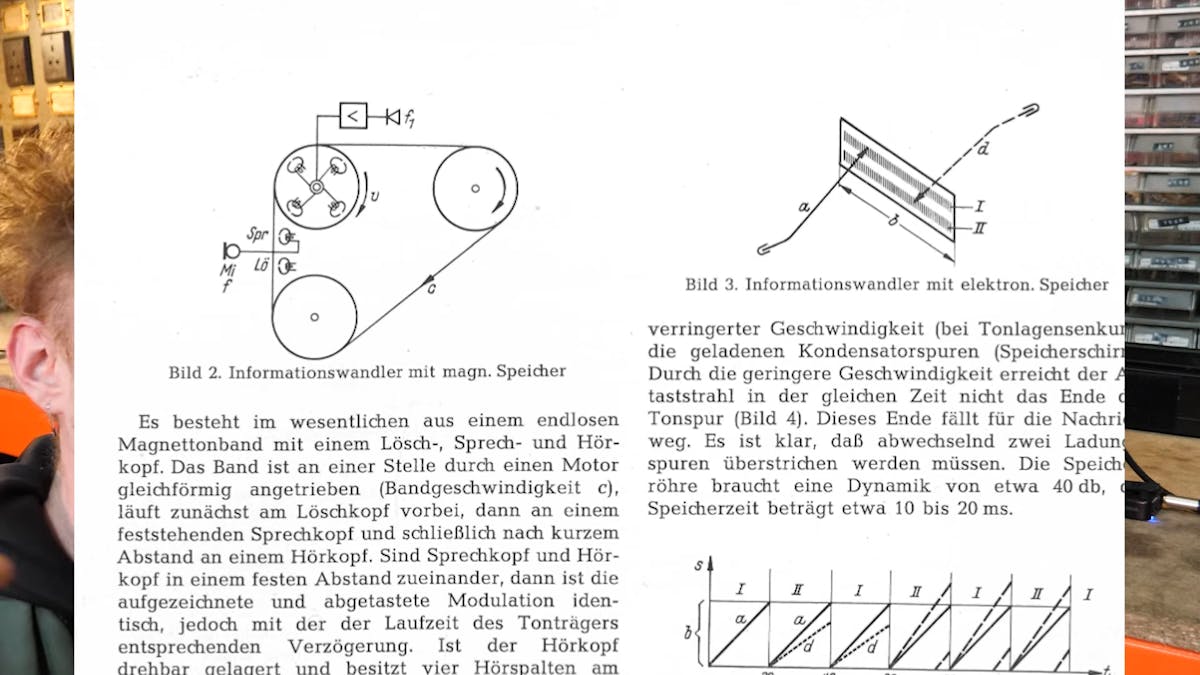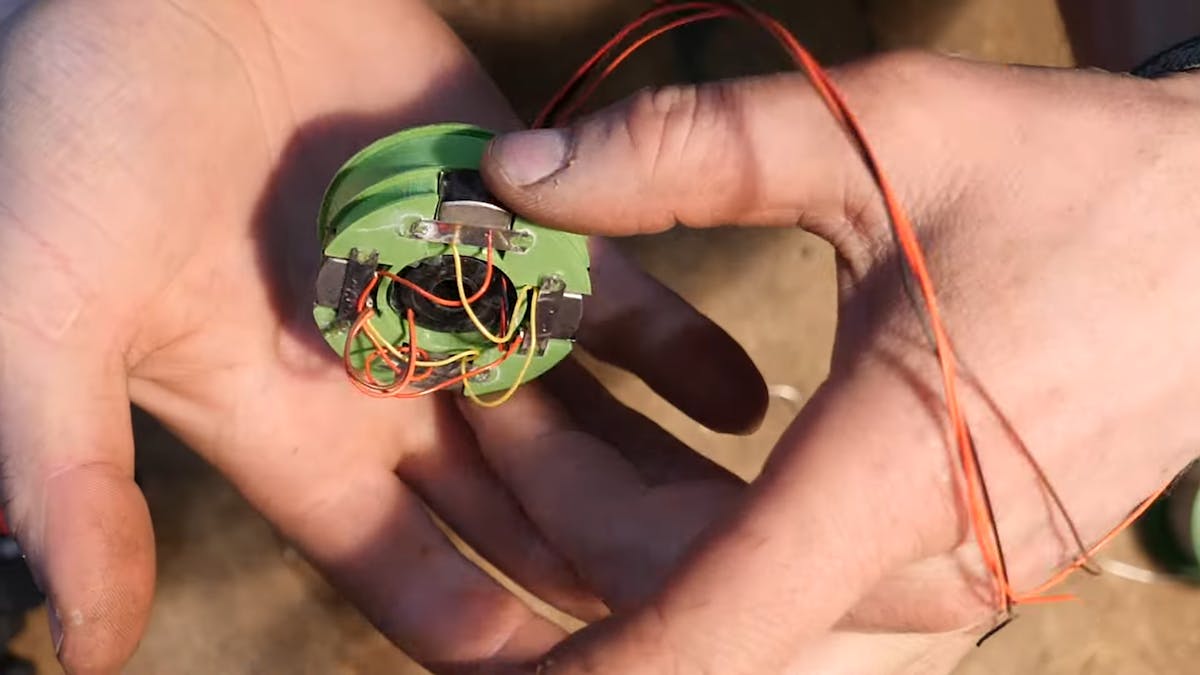Analog Pitch-Shifting Using a Single Tape Loop
Sam Battle achieved something that seems like it should be impossible: an analog tape loop pitch-shifting effect in real-time.

The pitch of a sound is its frequency. Increasing the frequency of a sound increases the pitch. Conversely, decreasing the frequency lowers the pitch. How do you change the frequency? Well, if you have a recording, you can simply alter the playback speed. Most vinyl record fans have experienced this for themselves as a result of accidentally setting the turntable to the wrong RPM. But what if you want the same effect in real-time? Sam Battle of LOOK MUM NO COMPUTER found a very clever analog solution based on a tape loop.
If you’re thinking that this effect is as simple as running a tape loop, similar to a traditional tape delay, at a variable speed, then you’re not fully considering the ramifications of the real-time aspect. Battle couldn’t just run the tape loop faster to increase pitch, because the device needs to record at the same time it plays. Aside from a very slight delay (the distance between the recording head and the playback head), the recording speed and playback speed would match and there wouldn’t be any shift in pitch. The problem is trivial with digital signal processing, but seems impossible to solve using an analog tape loop like this.

The ingenious solution dates back to at least a design for a “tempophone” from the 1960s. It works by moving the playback heads (yes, plural) relative to the normal speed of the magnetic tape. That is possible because the playback heads (four of them on this device) mount on a spinning wheel. If that wheel spins backwards, relative to the tape, it is effectively slowing down the playback speed and therefore dropping the pitch. If the wheel spins forwards, it is increasing the playback speed and the pitch.

The reason the tempophone arrangement is so clever is that it solves the real-time effect problem. Of course, it can’t actually play back audio faster than that audio is being recorded, because time is a thing. What it is actually doing is taking advantage of the slight delay between a point on the tape crossing over the recording head and the same point reaching the spinning playback heads. The playback heads then move over that short length of tape either faster or slower than normal. It naturally makes up for the “gained” time (or lost time, in a pitch drop) by clipping until the next head on the wheel comes around.
That clipping does produce a sort of warbling sound, but that is pretty neat in its own right.
Battle built his own tempophone-style real-time pitch shifter using 3D-printed mounts on sheet metal, some standard tape deck parts, one stepper motor to feed the tape, and another stepper motor to spin the playback heads. Two Arduino Nano boards control those motors according to input from potentiometers.
Writer for Hackster News. Proud husband and dog dad. Maker and serial hobbyist. Check out my YouTube channel: Serial Hobbyism


